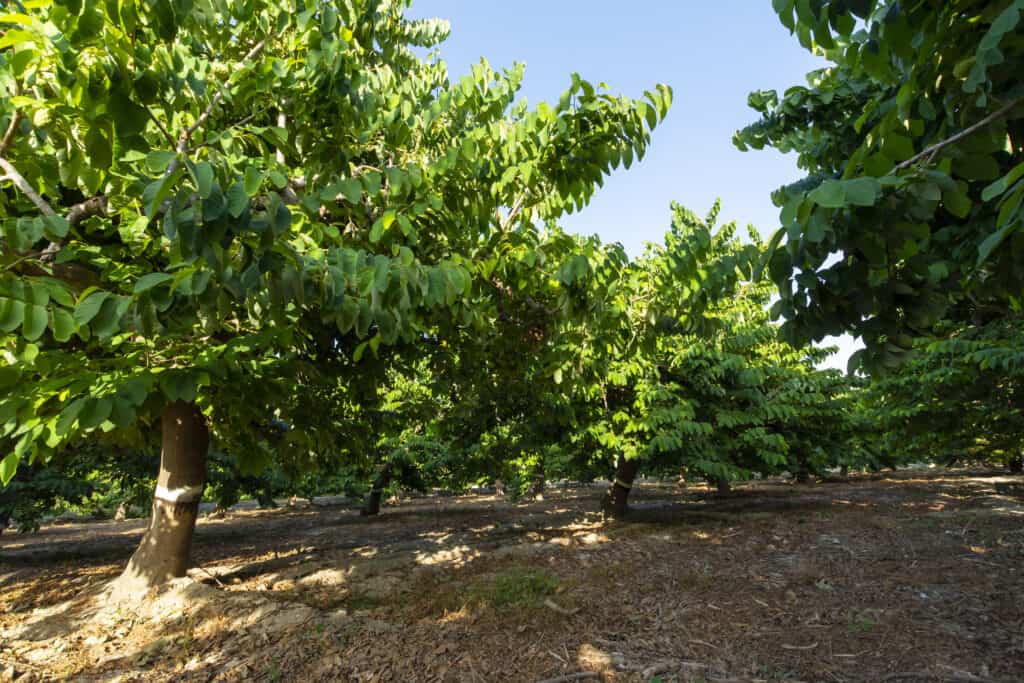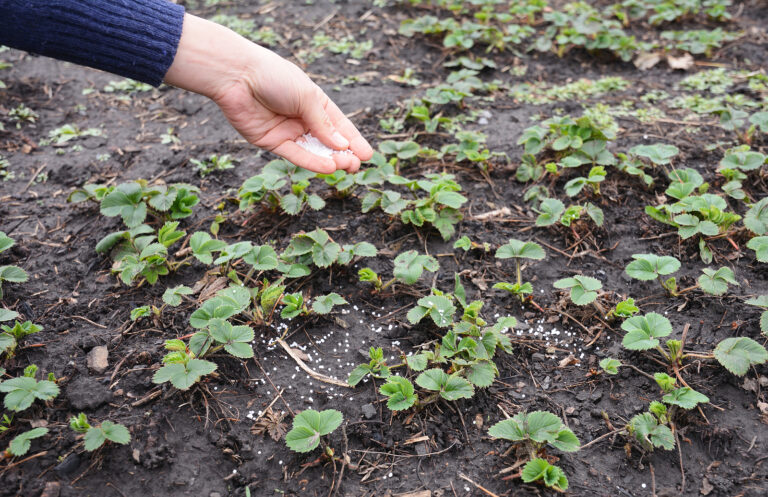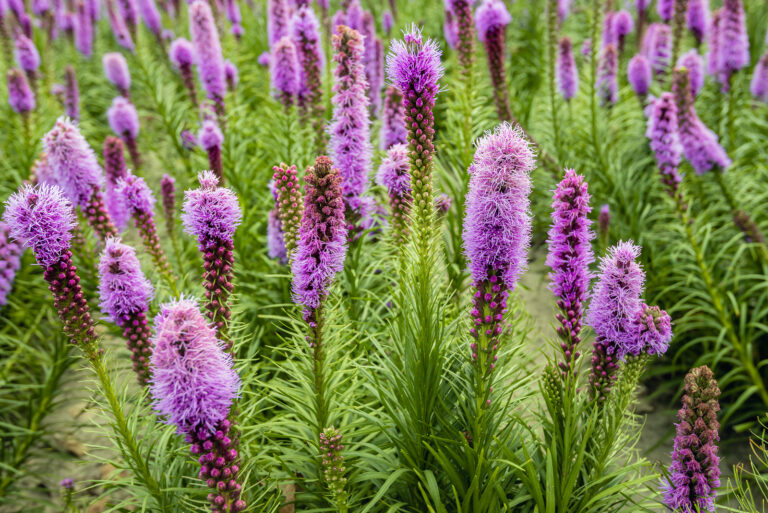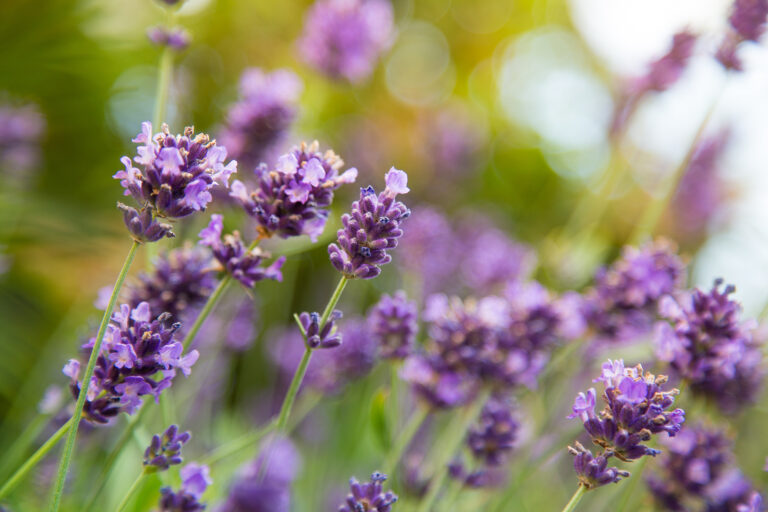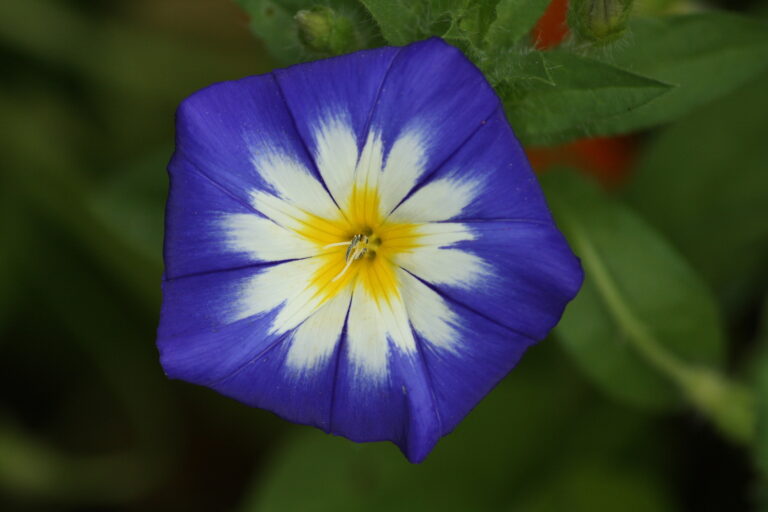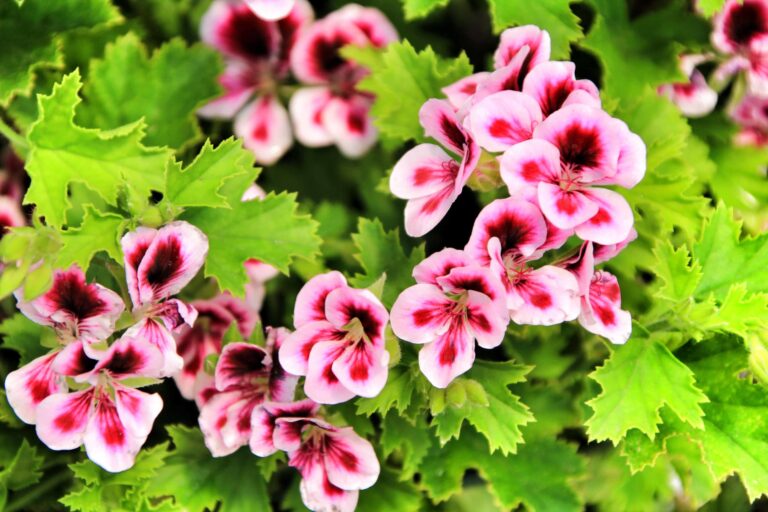How to Plant, Grow, and Harvest Cherimoya
Cherimoya is a heart-shaped fruit grown on a mostly evergreen tree native to Ecuador and Peru.
Cherimoya fruit ranges in weight from about ¼ to 2½ pounds. The fruit has dull green skin with thumbprint-like indentations edged in brown. Inside is a creamy, custard-like pulp with a flavor reminiscent of banana, pineapple, and pear.
Related article:
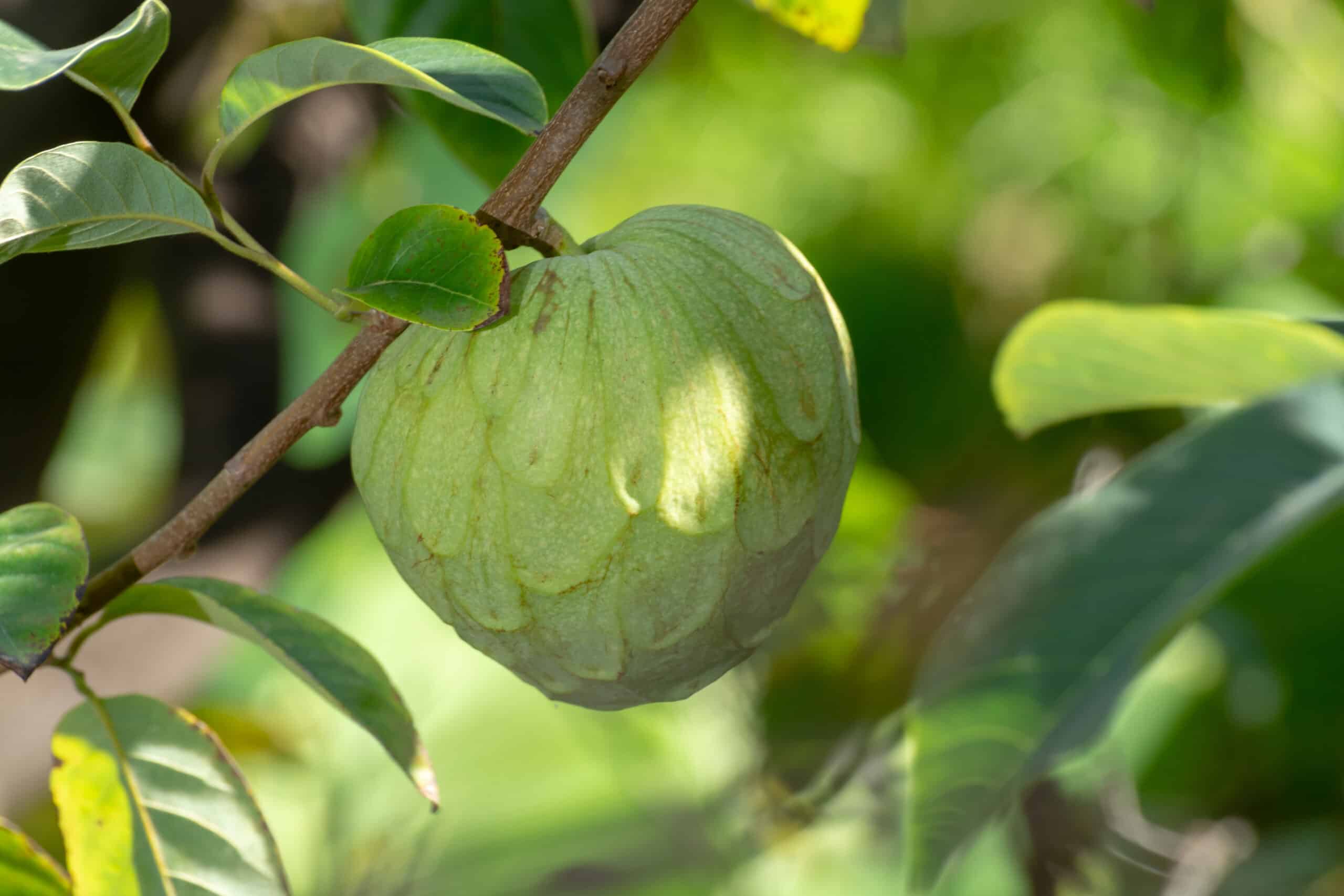
Cherimoya is a fast-growing, mostly evergreen tree. Cherimoyas can grow to 20 to 30 feet tall and about as wide. It can be trained and pruned to a lower height. Young branches grow opposite one another forming a natural espalier.
Cherimoya is sometimes called custard apple or sherbet fruit.
Cherimoya can be eaten chilled “on the half shell”. The flesh can be scooped with a spoon or diced and added to fruit salads or pureed for sherbet, ice cream, and daiquiris. Remove seeds before serving.
Here is your complete guide to growing cherimoya.
Best climate and site for growing cherimoya
- Cherimoya is a subtropical plant or mild temperate climate; it will tolerate light frosts. Mature trees will be injured or killed at 25° In chilly winter regions plant cherimoyas in a sunny, south-facing location.
- Cherimoyas require 50 to 100 chilling hours each winter in order to leaf out and set fruit in spring; chilling hours are hours at 43°F or lower. In temperate climates, the tree loses its leaves for a short period from late winter to early spring
- Cherimoyas do not grow well where the summer heat is dry. Cool coastal summer regions are best for growing cherimoya.
- Plant cherimoyas in full sun. Be aware that leaves and fruit can sunburn if cherimoya is planted where the summer sun is intense and hot. If summers are very hot, plant cherimoya where it will get morning sun but will be sheltered from hot midday and late afternoon sun.
- Cherimoya can be trained to espalier against a wall. Young branches grow opposite one another forming a natural espalier.
- Plant cherimoyas in compost-rich, loamy soil that is well-drained. The optimum pH range is 6.5 to 7.6.
Cherimoya pollination
- A cherimoya tree has both male and female flowers, but the two are not open at the same time. Female flowers open first for about 36 hours; the male flowers open after.
- Cherimoyas are best hand pollinated. Collect pollen from the tan-colored anthers of male flowers with a small artist’s brush then apply the pollen to open female flowers. If no female flowers are open, save the pollen in a closed container in the refrigerator. Hand pollinate every two days during flowering to ensure pollination.
- Pollination by insects is unlikely; few insects visit the flowers.
Spacing cherimoya
- Cherimoya can grow to 30 feet tall and wide; some cultivars are smaller. Consider the size of the tree at maturity when planting.
Planting cherimoya
- Prepare a planting site in full sun that is sheltered from a prevailing breeze or wind.
- Work well-rotted compost or manure into the soil.
- Dig a hole half again as deep and twice as wide as the tree’s roots. Add a cupful of all-purpose fertilizer to the bottom of the hole.
- Put a tree stake (or support wires for a fan) in place before planting. Drive the stake into the ground to the side of the hole to at least 2 feet deep. Cherimoyas are shallow-rooted; they should be staked at planting time.
- Set the plant in the hole so that the soil mark from the nursery pot on the stem is at the surface level as the surrounding soil. Spread the roots out in all directions.
- Re-fill the hole with half native soil and half aged compost or commercial organic planting mix; firm in the soil so that there are no air pockets among the roots. Water in the soil and create a modest soil basin around the trunk to hold water at watering time.
- Secure the tree to the stake with tree ties.
- After planting, water each tree thoroughly and fertilize it with a high-phosphorus liquid starter fertilizer.
Container growing cherimoya
- Cherimoyas are difficult to grow in containers because they grow a taproot and their size at maturity.
Watering and feeding cherimoya
- Keep the soil evenly moist but not wet; cherimoyas are susceptible to root rot in wet soil. Do not water cherimoya trees when they are dormant.
- Cherimoya will drop leaves if the roots go dry during the growing season. If leaves drop, fruit can suffer sunburn.
- Feed cherimoya with a balanced organic fertilizer such as 10-10-10 or less. Feed trees every three months from midwinter to harvest.
Training and pruning cherimoya
- Train cherimoyas to two scaffold branches at two feet above the ground. Prune young scaffolds back to about two feet. From the laterals, save the strongest shoots growing at 60 to 90 degrees and remove the others.
- Each year when new growth starts, prune to keep the next harvest within easy reach; remove two-thirds of the past year’s growth leaving six to seven buds on each stem.
- Each year remove broken, diseased, or crossing branches.
- Prune cherimoyas when they are dormant.
Harvesting and storing cherimoya
- Cherimoya fruit is ripe when it gives slight to thumb pressure. The fruit is overripe when it browns.
- Hard, unripe cherimoyas can be ripened at room temperature.
- Ripe cherimoyas should be refrigerated and eaten within one or two days.
Propagating cherimoya
- Cherimoya can be propagated by seed; the seed is viable for two to three years if kept dry. Sow seed in deep containers; cherimoya forms a taproot.
Cherimoya pests and diseases
- Yellow leaves are an indication the soil may be too dry, or the weather is too cold, not necessarily a lack of nitrogen.
- Mealybugs suck sap from leaves and young branches; wash mealybugs off plants with a strong spray of water.
- Snails will climb the tree and eat foliage; place copper tape or apply Tanglefoot (sticky goo) to masking tape placed around the trunk; these will prevent snails and other insects from reaching foliage and fruit.
- Crown rot can kill trees planted in perpetually wet soil.
- Verticillium fungal disease can cause branches and leaves to brown and die back; remove diseased branches and foliage and place them in the trash.
Fall and winter cherimoya care
- Protect young trees from frost; cover the tree with a plant blanket or wrap the trunk and scaffold branches with lengths of sponge foam.
Cherimoya varieties to grow
- ‘Bays’: flavor good, almost lemony; round, medium-size fruit with light green, skin; broad tree to 20 feet tall.
- ‘Big Sister’: good flavor; large, very smooth fruit; often self-fruitful.
- ‘Booth’: flavor reminiscent of papaya; medium size, conical fruit; seedy; among hardiest of cherimoya; grows 20 to 30 feet tall.
- ‘Chaffey’: very lemony flavor; small to medium size, round fruit; fast-growing in coastal areas.
- ‘Ecuador’: good flavor; medium size, dark green fruit; spreading tree; cold tolerant.
- ‘El Bumpo’: very flavorful; medium-size, conical fruit; skin is soft and almost edible.
- ‘Honeyhart’: excellent flavor, very juicy; medium size fruit with smooth yellowish-green skin; ripens in winter.
- ‘Knight’: very sweet; the flesh has a slightly grainy texture.
- ‘Libby’: Sweet, strong flavor; round conical fruit; early harvest; large tree.
- ‘McPherson’: flavor reminiscent of banana; small to medium fruit is conical and dark green; few seeds; the tree grows to 30 feet.
- ‘Nata’: sweet-acid flavor balance; smooth, light green fruit to 2 ½ pounds; thin skin; tends to self-pollinate.
- ‘Ott’: very sweet, medium-size fruit; yellow flesh; seedy; matures early.
- ‘Pierce’: high sugar content; medium-size, elongated, and conical fruit; smooth skin.
- ‘Sabor’: very good flavor; small to medium-sized fruit.
- ‘Whaley’: good flavor; medium to large, elongated, conical fruit.
- ‘White’: weak mango-papaya flavor; juicy flesh; large fruits to 4 pounds; tree grow to 35 feet.
Also of interest:
How to Grow Feijoa Strawberry Guava
Related articles:
Planning the Home Fruit Garden
Garden Planning Books at Amazon:
- Vegetable Garden Almanac & Planner
- Kitchen Garden Grower’s Guide Vegetable Encyclopedia
- Vegetable Garden Grower’s Guide
- Tomato Grower’s Answer Book
More fruit-growing articles:
Learn how to plant, grow, prune, and harvest your favorite fruits. Click below for all you need to know.
- Apple
- Apricot
- Avocado
- Banana
- Blackberry
- Blueberry
- Cantaloupe
- Chayote
- Cherimoya
- Cherry
- Citrus
- Clementine
- Cranberry
- Currants
- Elderberry
- Feijoa
- Fig
- Gooseberry
- Grape
- Grapefruit
- Guava
- Kiwifruit
- Kumquat
- Lemon
- Lime
- Loquat
- Mandarin
- Mango
- Melon
- Mulberry
- Muskmelon
- Nectarine
- Olive
- Orange
- Papaya
- Passion Fruit
- Peach
- Pear
- Persimmon
- Pineapple
- Pineapple Guava
- Plantain
- Plum
- Pomegranate
- Pumpkin
- Quince
- Raspberry
- Strawberry
- Tangelo
- Tangerine
- Tangor
- Watermelon

